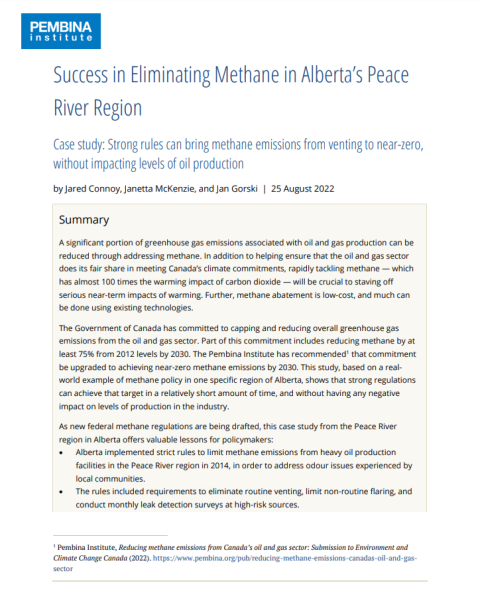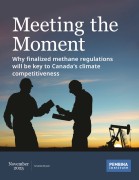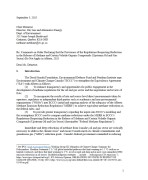A significant portion of greenhouse gas emissions associated with oil and gas production can be reduced through addressing methane. In addition to helping ensure that the oil and gas sector does its fair share in meeting Canada’s climate commitments, rapidly tackling methane — which has almost 100 times the warming impact of carbon dioxide — will be crucial to staving off serious near-term impacts of warming. Further, methane abatement is low-cost, and much can be done using existing technologies.
The Government of Canada has committed to capping and reducing overall greenhouse gas emissions from the oil and gas sector. Part of this commitment includes reducing methane by at least 75% from 2012 levels by 2030. The Pembina Institute has recommended that commitment be upgraded to achieving near-zero methane emissions by 2030. This study, based on a real-world example of methane policy in one specific region of Alberta, shows that strong regulations can achieve that target in a relatively short amount of time, and without having any negative impact on levels of production in the industry.
As new federal methane regulations are being drafted, this case study from the Peace River region in Alberta offers valuable lessons for policymakers:
- Alberta implemented strict rules to limit methane emissions from heavy oil production facilities in the Peace River region in 2014, in order to address odour issues experienced by local communities.
- The rules included requirements to eliminate routine venting, limit non-routine flaring, and conduct monthly leak detection surveys at high-risk sources.
- Our research demonstrates that these regulations resulted in a near elimination of methane emissions from these sources in the region, without having any impact on oil production.
- The success in Peace River shows that Canada can raise its ambition on methane abatement, and design strong regulations to achieve that ambition, without negatively impacting production.
- The Peace River regulations are in line with best practices from regulations in Colorado, New Mexico and draft regulations from the U.S. Environmental Protection Agency.







